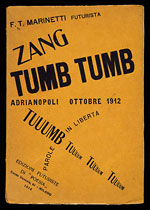Remarkable Repositories: Assembling the Getty
Dedicated curators and librarians help institutions assemble remarkable libraries at record breaking speeds. By Nicholas A. Basbanes
 Nicholas A. Basbanes recently received a National Endowment for the Humanities fellowship to work on his book on paper, which is forthcoming from Knopf. His most recent book is Editions & Impressions, a collection of essays. His other works include the acclaimed A Gentle Madness, Every Book Its Reader, Patience & Fortitude, Among the Gently Mad, and A Splendor of Letters.
Nicholas A. Basbanes recently received a National Endowment for the Humanities fellowship to work on his book on paper, which is forthcoming from Knopf. His most recent book is Editions & Impressions, a collection of essays. His other works include the acclaimed A Gentle Madness, Every Book Its Reader, Patience & Fortitude, Among the Gently Mad, and A Splendor of Letters.
One of my very favorite lines from John Hill Burton’s nineteenth-century masterpiece, The Book-Hunter, deals with the life cycle of remarkable repositories, and how they tend as a rule to be assembled over extended periods of time. “A great library cannot be constructed,” the Scottish historian declared in 1862, “it is the growth of ages.”
Well, Burton, for the most part, was 100 percent correct; history has indeed proven that these irreplaceable gatherings of wisdom and knowledge are synergistic wonders that normally take generations to mature, and that they require the dedicated efforts of many individuals to make it happen. But every once in a while you run across examples of institutions that are in a hurry, and because they have the means and the will to acquire on a grand scale, they achieve significance in a very short period of time. A good deal of this requires purpose and foresight at the top levels of leadership, of course, but it is the wherewithal to get it done that inevitably makes the difference between pipe dream and triumph.
Certainly a textbook example of this phenomenon is the Humanities Research Center (HRC) at the University of Texas in Austin, now known as the Harry Ransom Center for the man whose driving ambition—expressed succinctly by him in 1956 as the creation of a Bibliothèqe Nationale for the Southwest—was largely realized within 20 years. He was able to do this because in addition to the ready availability of cash—Texas was awash in oil money in those days—was the path breaking goal he had articulated. Ransom had set his sights on documenting with original materials the full sweep of twentieth century in all its spunk and glory, his motivation, as I characterized it in A Gentle Madness, to acquire a veneer of “instant ivy” for the university. Most astonishing of all, he succeeded, and in very short order. By 1970, the stature of the HRC was such that Anthony Hobson included Texas in Great Libraries, a learned compilation of the world’s outstanding research collections.
A similar dynamic has been taking place over the past two decades at the Getty Research Institute (GRI) in Los Angeles, created in 1983 with funds from a $1.2 billion trust established by the estate of the late oilman J. Paul Getty, and one of four divisions located today at the massive Getty Center, which opened in 1997. Set on a majestic 110-acre site in the Brentwood Hills section of the city, the complex—which includes the Getty Museum—contains a comprehensive collection of Western art dating from the Middle Ages to the present, and attracts some 1.3 million visitors a year. (The original museum building in nearby Malibu, reopened in 2006 after extensive renovations and now known as the Getty Villa, contains art from ancient Greece, Rome, and Etruria.) Also operating under the J. Paul Getty Trust umbrella are the Getty Conservation Institute, which works internationally to preserve a variety of artistic, archaeological, and architectural projects, and the Getty Foundation, which supports the various programs.
What is truly amazing about all this cultural energy is how seamlessly it seems to be working, and the great strides that are constantly being made. But as happens so often with libraries—especially when set aside the array of master paintings, exquisite sculptures, illuminated manuscripts, and classic photographs that grace the galleries of the museum—the books do tend to generate less pizzazz, at least in the eyes of the general public, which is a shame, because what has been accomplished here in a quarter of a century is nothing short of amazing, a reality not lost on the stream of scholars who now regard time spent there as essential to their work.
I had an opportunity during a recent visit to Los Angeles to spend an afternoon at the GRI, and meet with Susan M. Allen, for the past eleven years associate director and chief librarian, and Marcia Reed, the chief curator and head of collection development, who has been involved with stocking the library with material since its inception. Today, the holdings number a tad over 1 million books, with more than 50,000 classified as rare. “When the Research Institute was founded in 1983, there was a small curatorial library of about 14,000 volumes from the old museum, that was it,” Allen said. “In other words, we started pretty much from scratch.”
As an independent research library, the Getty has a specific field of interest, which in this instance is art history. “We also support all of the staff and all of the curators of the Getty, and the scientists at the Conservation Institute,” she said. “At any given time about five hundred staff members have materials checked out from our non-rare collections to their offices.” And new titles are being added at a rate of about 16,000 a year.











